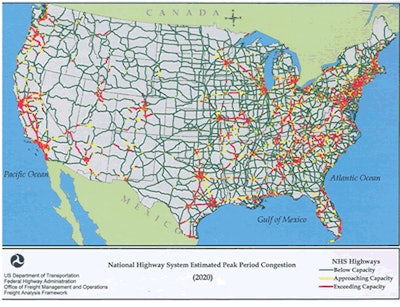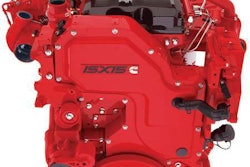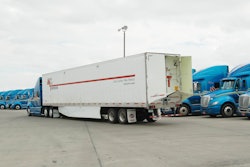
The U.S. Department of Transportation announced the launch of the Freight Policy Council, which will focus on improving the condition and performance of the national freight network to better ensure the ability of the United States to compete in today’s global economy. The council’s goal is to develop a national intermodal plan for improving the efficiency of freight movement, and it will work with states to encourage development of a forward-looking state freight strategy.
“Our freight system is the lifeblood of the American economy, moving goods quickly and efficiently to benefit both businesses and consumers across the country,” said U.S. Transportation Secretary Ray LaHood. “With the launch of the Freight Policy Council, we have an opportunity to make not only our freight system, but all modes of transportation, stronger and better connected.”
The recent transportation bill, Moving Ahead for Progress in the 21st Century, or MAP-21, signed by President Obama last month, established a national freight policy and called for the creation of a National Freight Strategic Plan. DOT’s Freight Policy Council will implement the key freight provisions of the legislation. President Obama’s goal is to double U.S. exports by 2015.
The council will be chaired by Deputy Transportation Secretary John Porcari and will include DOT leadership from highways, rail, ports and airports, as well as economic and policy experts from across the administration. The freight and logistics industries, consumers and other stakeholders also will play an advisory role, and states will be asked to offer proposals for improving the freight system in their region.
“With increasing competition abroad, Washington businesses require a 21st century approach to moving goods,” said U.S. Senator Maria Cantwell (D-Wash.). “This new Freight Policy Council provides the roadmap our nation needs to stay competitive and grow our trade economy.”
The nation’s freight transportation system moves goods on roads, rails and ships. Today, every American is responsible for 40 tons of freight a year. DOT said a more efficient freight network will reduce traffic congestion, environmental impact and shipping costs, which will lead to lower prices for consumers. The department continues to invest in freight through grant and loan programs.
More than $953 million in Transportation Investment Generating Economic Recover (TIGER) funds have gone to 50 projects that improve freight. More than a third of TIGER funding – $354 million – went to 25 port projects from coast to coast. Freight projects also are eligible for the Railroad Rehabilitation & Improvement Financing (RRIF) program which provides up to $35 billion in loans and loan guarantees. Under MAP-21, freight projects can also qualify for $1.75 billion in Transportation Infrastructure Finance and Innovation Act (TIFIA) funding for the next two years.











